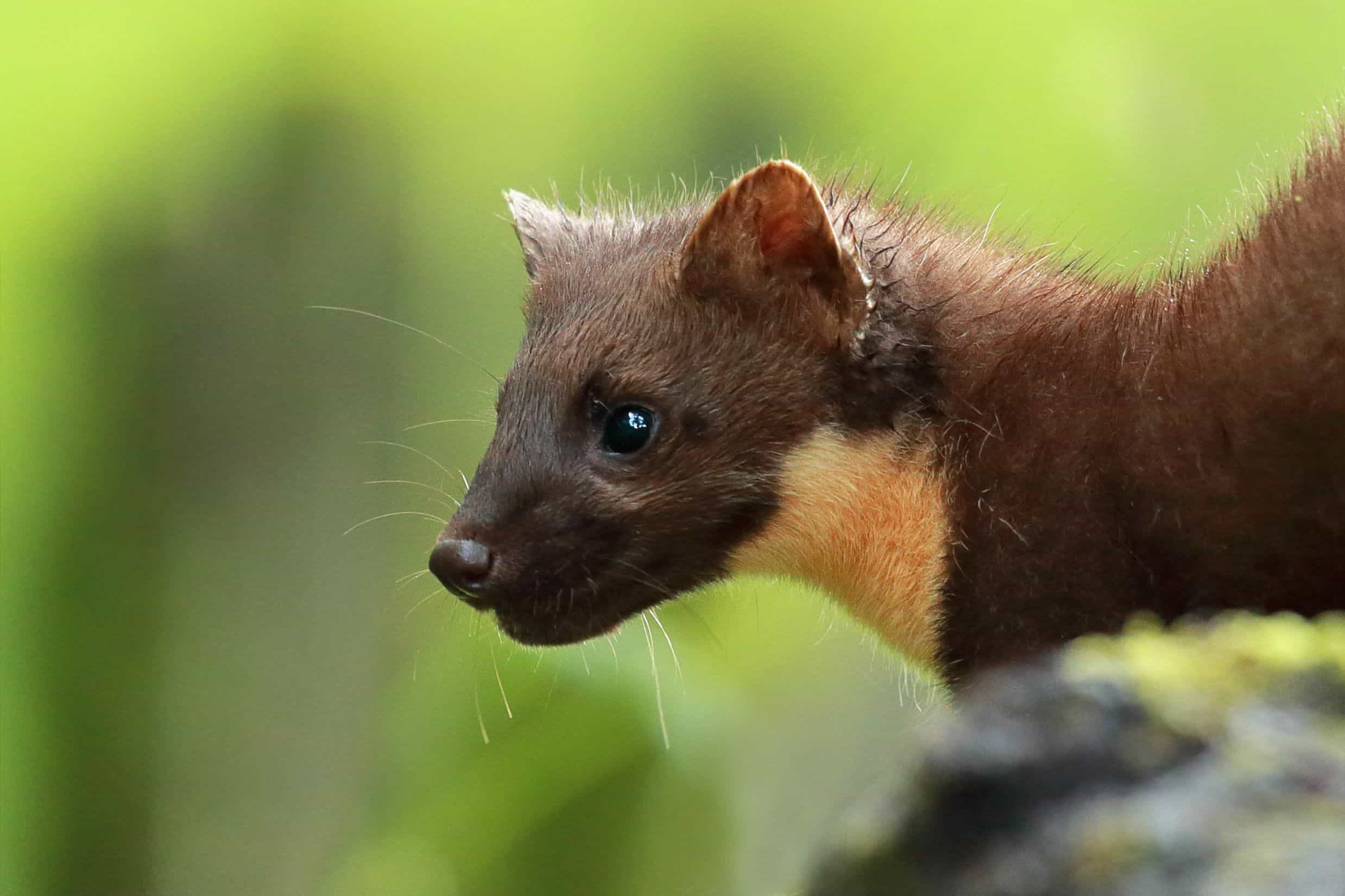Everything you need to know about pine martens
The pine marten relies on well-connected, mixed species woodlands for food, shelter and to raise its young. Forest Holidays is delighted to report that a group of about 20 of these charismatic creatures has chosen to make their home at our Strathyre location. Our Forest Ranger at Strathyre, Jack Black, offers expert insight into these little-known animals, delving into their interesting habits and character.
What do pine martens look like?
Dark reddish brown in colour, with a creamy yellow throat bib, pine martens are members of the stoat and weasel family (mustelids). They are slender creatures, with a pointed face and a long bushy tail that allows them to balance in trees. They are between 19-27 inches long; roughly the size of a domestic cat. Pine martens are the only mustelids with semi-retractable claws, which enable them to climb trees as well as run on the ground. They have small, rounded, highly sensitive ears which are tipped with yellow, and they have sharp teeth.
Pine marten characteristics
Pine martens are most active at dusk and are agile treetop hunters. They can leap from tree to tree in pursuit of squirrels, twisting fluidly in mid-air to ensure a safe landing. Pine martens prefer to live alone and are territorial animals, with large territories of 5-20km2, depending on availability of food. Shy yet curious, they're usually hard to spot unless it is on the hunt for food!
Pine marten nesting & sleeping
Pine martens favour well-wooded areas with plenty of cover, where they make their dens and breeding nests in tree hollows and abandoned animal homes. They will also use purpose-built den boxes. If necessary, they will survive in more open habitats such as rocky hillsides and scrubland.
Pine marten eating habits
Pine martens are omnivores and have a varied diet. They will eat small mammals such as voles, rabbits, insects and squirrels, as well as seasonal produce such as fruits and berries. They’re very opportunistic and will cheekily devour any leftovers with relish; they are known for their sweet tooth!
Ensuring survival
Is anything being done to ensure the survival of the pine marten? In short, yes. As well as being officially protected, efforts are being made to encourage a resurgence of this native animal in Britain.
Pine marten reproduction
Pine martens are sexually mature by 2 or 3 years of age and the females usually give birth in March or April to litters of around 2-5. The young are fully independent around 6 months after their birth; the male pine marten plays no part in rearing the young. In the wild, pine martens have a lifespan of roughly 8-10 years.
Responsible viewing
We ask our guests to appreciate that they're watching this protected animal in its natural habitat as opposed to a zoo. Pine martens rarely emerge into open space and are most likely to be seen in the evening. If you spot a pine marten near your cabin, we recommend that you stay quiet and don't try to touch it. We don't advise attempting to hand-feed the pine martens; they are opportunistic creatures and can find their own food, which is why you may see them pinching leftover scraps.
Their role in ecology
As with all nature, the pine marten plays its part in the delicate ecology of the forest. In particular, the pine marten has been credited with reducing the population of the invasive grey squirrel, which has historically pushed out native red squirrels. The theory is that the grey squirrel is clumsier and heavier than the red squirrel and spends more time on the ground, making it easier prey for the nimble pine marten. This means that where pine martens are thriving, the red squirrel population also benefits. The red squirrel has recently been voted Scotland’s second favourite wild animal but there are now only an estimated 150,000 left in the UK, mostly living in rural Scotland and Wales. Let’s hope the pine marten can come to the rescue.
Why Strathyre?
There are about 20 pine martens who have made their home here. The location at Strathyre provides the perfect habitat for the pine marten; the mixed woodland includes birch, spruce, pine and outcrops and offers plenty of places to make dens.

